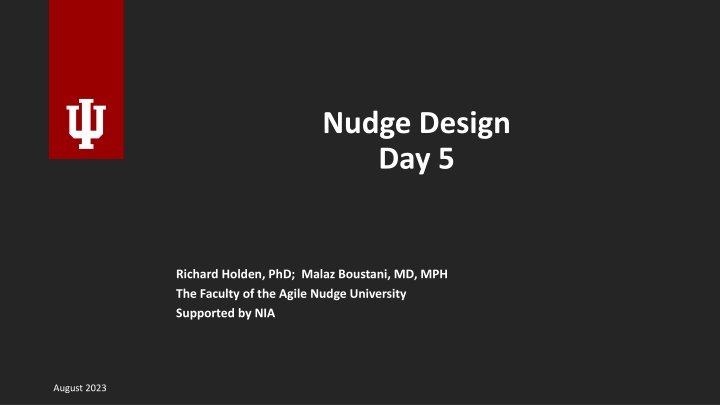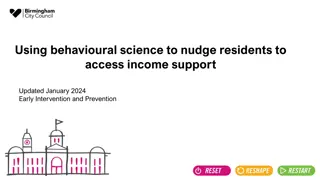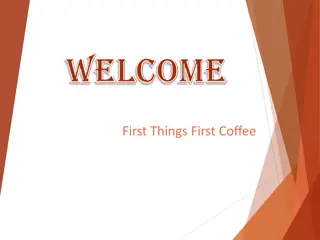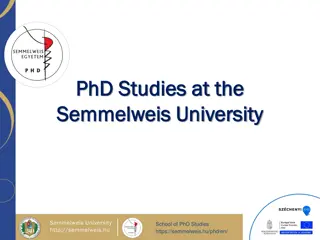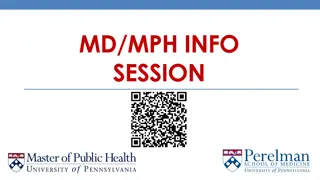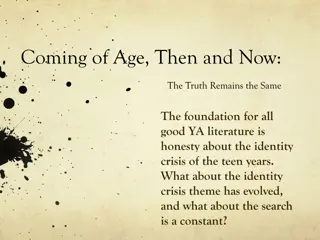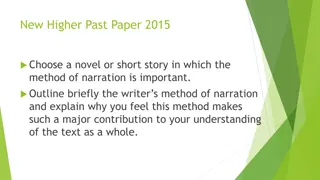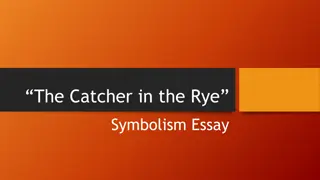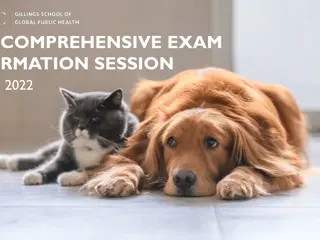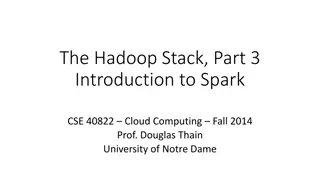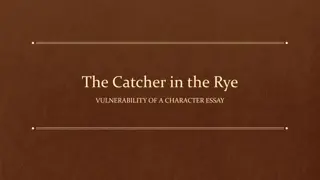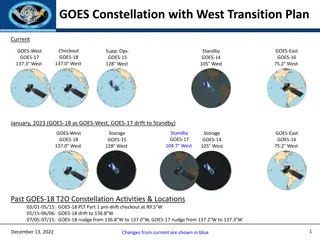Nudge Design Day 5 - Richard Holden, PhD; Malaz Boustani, MD, MPH
Join Richard Holden, PhD, and Malaz Boustani, MD, MPH at the Faculty of the Agile Nudge University for a deep dive into designing effective nudges. Explore the impact equation and practical strategies for behavior change. Learn how to confirm demand, map environments, and target behaviors effectively. Gain insights from experts in the field and elevate your nudge design skills to create impactful solutions for sustainable change.
Download Presentation

Please find below an Image/Link to download the presentation.
The content on the website is provided AS IS for your information and personal use only. It may not be sold, licensed, or shared on other websites without obtaining consent from the author.If you encounter any issues during the download, it is possible that the publisher has removed the file from their server.
You are allowed to download the files provided on this website for personal or commercial use, subject to the condition that they are used lawfully. All files are the property of their respective owners.
The content on the website is provided AS IS for your information and personal use only. It may not be sold, licensed, or shared on other websites without obtaining consent from the author.
E N D
Presentation Transcript
Nudge Design Day 5 Richard Holden, PhD; Malaz Boustani, MD, MPH The Faculty of the Agile Nudge University Supported by NIA August 2023
Malaz Boustani Equity Ownership in RestUp, LLC Preferred Population Health Management, LLC Blue Agilis, LLC DigiCare Realized, Inc Advisory board member in the past 12 months for : Biogen, Genentech, Lilly, Merck & Eisai Author with royalty for Agile Implementation Book; The Agile Network Book Teacher of IU Graduate Certificate in Innovation and Implementation Science Scientist who receive funding from Federal agencies NIH AHRQ CMS
The Impact Equation ES x I x Sc x St = IS Impactful Solution (IS) x x x = Effect Size (ES) Implantability (I) Scalability (Sc) Sustainability(St )
Part 1 Designing a Nudge
Your Journey Starts Here Title of Sprint Nudge Label Point Person Date Range of Sprint Link Objective
Confirm Demand (cont.) [Clear and concise problem statement] Problem [confirm demand using quantitative data, attach information here] Table 1 of 2 Stakeholders Agreement [attach signoff date here] Table 2 of 2
Mapping (cont.1) Map the digital, physical, and social environment surrounding people who are targeted for behavioral changes by answering four questions:
Mapping (cont.2) Who is the person targeted, what is their current behavior that needs to be changed? Table 1 of 8 Who are the people interacting with the targeted person, do they have any current behavior that is contributing to the target person's current behavior? Table 2 of 8
Mapping (cont.3) Is there any existing messenger that could be used as a nudge carrier or a nudge? Table 3 of 8 Are there any existing digital, physical and social artifacts (or nudges) that are contributing to the current behavior of the targeted person? Table 4 of 8
ADKAR TERM Specific Problem Awareness (what is happening) Desire (wants) Knowledge (what is known) Ability (how) Reinforcement (why)
Nudge & Stakeholder Agreement Nudge [evidence justifying nudge] [provide effect size if evidence has a similar population to the study (use extra slides if needed) Table 7 of 8 Stakeholders Agreement [attach signoff date here] Table 8 of 8
De-Nudge De-Nudge any existing nudges in the current behavior.
Why Search the Cognitive Bias Library? Search the cognitive bias library to identify the cognitive bias that might be leveraged to design a Minimally Viable Nudge to accomplish the target behavior.
Thinking Problems Four thinking problems faced by humans based on 20 cognitive biases of human: Too much information Need to act fast Not enough meaning Factory Memory
Why to Search the Nudge Library? Search the Nudge Library to identify existing Minimally Viable Nudge that are based on the cognitive biases that might be leveraged to design a nudge to accomplish the target behavior.
Why and What to Select? Select the milieu of the nudge (digital, physical, social); Use the MINDSPACE checklist to select the category for designing the Minimally Viable Nudge and then; Check the compatibility of your Minimally Viable Nudge with the EAST checklist.
The EAST Checklist The EAST checklist is a way to gauge the potential success of your new nudge prior to testing the new nudge in a series of real-world sprints. The goal is to make your nudge Easy, Attractive, Social and Timely.
Using the EAST Checklist For each of the following four items, please use your own judgment to score your nudge compatibility with each item from 1-5. Sum the scores. The higher the total score, the more likely your nudge will be successful. If you score 15 or higher, your nudge has a good probability of making a behavioral change.
EAST Easy: Make the nudge easy for people Attractive: Make the nudge attractive; to do; preset options; less effort; simple messages something people would want to do; entices 1 2 3 4 5 1 2 3 4 5 Poor Medio cre Grea t Poor Medio cre Grea t Social: Title the nudge to something others are also Timely: Nudge at the most opportune time for doing; part of the norm; inspires commitment receptiveness; immediate costs or benefits 1 2 3 4 5 1 2 3 4 5 Poor Medio cre Grea t Poor Medio cre Grea t
The MINDSPACE Checklist This checklist is a quick way to know if your nudge is effective enough to use in a real-world setting. Each of the items in the next slide, represents a type of nudge or intervention. Score each item 1-5 by checking the appropriate score. The higher the nudge score the more effective the nudge. Score items based on your own judgment. If your score is 35 or higher, your nudge is capable of affecting behavioral change.
The MINDSPACE Checklist: MIND Incentives: We are very loss adverse. Messenger: We are heavily influenced by who delivers information 1 2 3 4 5 1 2 3 4 5 Medio cre Poor Grea t Poor Medio cre Grea t Norms: We are strongly impacted by our Defaults: We go with the flow and tend not perception of what others are doing. to change preset options given. 1 2 3 4 5 1 2 3 4 5 Grea t Poor Poor Medio cre Grea t Medio cre
The MINDSPACE Checklist: SPAC Priming: We are impacted subconsciously by Salience: We are drawn to information perceived environmental cues. to be novel and relevant. 1 2 3 4 5 1 2 3 4 5 Medio cre Grea t Poor Medio cre Grea t Poor Commitments: We seek to follow through on Affect: We go with our gut feelings; our first our public promises. emotional reaction. 1 2 3 4 5 1 2 3 4 5 Grea t Medio cre Poor Medio cre Grea t Poor
The MINDSPACE Checklist: E & Scores Ego: We want to feel good about ourselves. 1 2 3 4 5 Poor Medio cre Grea t 40-45= Grade A- Good to go! 35-39= Grade B- Proceed, but analyze the key elements that may be weak in MINDSPACE. 30-34= Grade C- Look for ways to improve the score in the areas that are weak in MINDSPACE. 25-29= Grade D- Make significant changes to adjust the MINDSPACE
Define the Termination Plan Define a termination plan for both the selected Minimally Viable Nudge as well as a termination plan to stop working on the targeted behavior.
Goal & Evidence-based nudge Goal [description of the how you want the nudge to effect behavior] Table 1 of 6 Evidence-based nudge Table 2 of 6
Description of Evaluation Description of Evaluation [description of how you are pulling your data, where and how often] Table 3 of 6
Who, When, What? Kill Benchmark: Who, When, What? [what is the point at which you deem the nudge is causing more harm than necessary(percentage or count lower than current rate) (kill benchmark rates could be from other areas in the journey map)] [description of why you chose that point] Table 3 of 6
Certifier & Acceptance Benchmark Kill Certifier [description of the how you want the nudge to effect behavior] Table 5 of 6 Acceptance Benchmark Table 6 of 6
Run Sprints Run a series of Sprints to test the selected Minimally Viable Nudge.
Design the Sprint What is the task you want to run the print for? Table 1 of 2 Does this task require one member or multiple members to be accomplished? If it needs efforts from one member, continue Sprint section up to slide 49. If it needs efforts from multiple members, disregard Sprint slides 42 to 49 and continue from slide 50. Table 2 of 2
If it needs effort from one member: How many hours do you think this member needs to work to accomplish this task? Table 1 of 14 You are a human, so multiply this number by 2, since humans are always optimistic Table 2 of 14
If it needs efforts from one member: Decide the length of the task completion per a day Divided the final number of hours from the previous slide, by the number of hours available for this member per a day to calculate how many days does this task need to be accomplished by this member: (Keep it in your mind that this member is also a human and have other needs than doing this task. So, it might be a good choice to dedicate less than 8 hours per a day for this task) Table 3 of 14
Design Design the sprint by filling tables on the following slides:
Localize Nudge MVP (Minimum Viable Product) Description of Minimally Viable Nudge Table 4 of 14 Length of the SPRINT (the experiment) [include extra slides if needed with more information about how the sprint will be run (example: include speeches, how you will reach out, how often, more detailed the better)] Table 5 of 14
Implement Sprints Start Date Table 6 of 14 End Date Table 7 of 14
Implement Sprints (cont.) Evaluate Date [this is a space to add more information when action items are getting done] [if there are themes or problems that are starting to show up] [this is a place for qualitative data as well] Table 8 of 14
Monitor Impacts Goal Table 11 of 14 Results [Refer back to step 3 to present data] Table 12 of 14
Establish MSOP (Minimally Standard Operating Procedure) Goal Table 11 of 14 Results [Refer back to step 3 to present data] Table 12 of 14
If it needs efforts from multiple members (1): Define the Minimally Viable Members to complete the task Table 1 of 16 Decide if these Minimally Viable Members need to be present and work on the task simultaneously or not If they need to be present simultaneously you need to design a team sprint. If they don t need to be present simultaneously you need to design a rely sprint. Table 2 of 16
If it needs efforts from multiple members (2): What are the functionalities of each member? Write separately for each member Table 3 of 16
